Confessions of a hybrid author
Why would a bestselling author with a national profile (um, that would be me) decide to dip a toe into new ways of publishing books?
It was the darkest day of my professional career.
On the surface, things looked good on Aug. 3, 2013. I’d just finished a series that had run on The New York Times Opinionator. I’d signed a contract for a new edition of Sin and Syntax, giving the book a new lease on life. Vex, Hex, Smash, Smooch was due out in October.
But the walls of my particular literary house were closing in on me, fast.
The New York Times had paid me less for those columns than I’d made since J-school. The advance for the new Sin and Syntax was 1/10 what I’d made for a second edition of my first book. (“Is there a zero missing?” I asked my agent when I saw the amount. “I talked them up from $2,500,” he replied.) And my advance for Vex was exactly half of what my advance for Sin and Syntax had been, 15 years earlier.
My elation dampened. I thought about the fate of my first book, Wired Style (it wasn’t in print anymore). Sure, my second book, Sin and Syntax, was approaching the magic 100,000 number in sales, but my “residual income” of $1.13 per paperback did not put me on a path either to financial stability or creative freedom. My third book, Vex, Hex, Smash, Smooch might never earn out. My mood got darker.
At least I could feel proud of what I’d done, I consoled myself. I could imagine all the writers I’d encouraged to express themselves in a more spirited way and all the students I’d helped shake off the “rules” of misguided grammar teachers.
Then my mood sank again. I’d built a brand as a language maven. Magazine editors kept calling for essays on words. Publishers wanted more language books. My plan to use these books as a springboard to do other work was foundering. I wanted to write about politics and culture. I wanted to write profiles. I wanted to write stories.
* * *
I spent a few days in a funk, then considered the possibility of going to grad school (at 60?), becoming a realtor (really?), or getting a job in a good wine shop (since when did I need inducement to quaff more?).
I do love writing and editing, I decided after much contemplation. So maybe I should start saying no to work that doesn’t pay well, focus on a few lucrative editing projects, and write only about things I’m passionate about—money and fame be damned.
The first subject on the list was Hawai‘i—the place where I was born, the location of my favorite dreams, the well that never runs dry. And what about that children’s book I’d written years ago and shelved after way too many sweet rejections?
Should I self-publish? I never saw myself as a DIY type. I’m proud that I have books with W. W. Norton and various divisions of Penguin Random House. I’ve never wanted to be a page designer, or a project manager, or a marketer, or a publicist.
Yet I’d been reading articles about “hybrid authors”—writers who dip their toes into the “trad” world of the big houses, the independence of self-publishing, and the scrappy reality of indie presses. Hybrid authors, it turns out, make more money than authors who turn exclusively to traditional publishing or self-publishing. Maybe it was time to dip one of my toes in.
Then my own dance teacher—a phenom in the hula world and a fixture on the ethnic-dance scene—asked me if I wanted to write a book. I mulled it. What if I used his story and his choreography to upend clichéd notions of hula and to write about the activism that is rocking the islands today?
His arts organization would pay me only a modest advance, but that would be more than I’d get from an academic or small press. We would collaborate, since he owned hundreds of photos. We could design the book exactly as we wanted (large trim size, four-color photography, Wired-like graphics). The arts organization would cover costs, and we’d split the profits. We did the math and realized we’d be in the black if we sold between 2,500 and 3,000 copies.
We hired a book consultant I had met through colleagues. She found us a hot designer, a crack copy editor, and lined up a printer. We reached out to publicists.
I knew the self-publishing reality. I knew that the average self-published book sells 250 copies. I knew that book reviewers didn’t review them and bookstores didn’t stock them. So we decided to co-publish with a new indie publisher, SparkPress, which gave us distribution through Ingram. That meant not only that the book would be available on Amazon, but that it could be ordered from any bookstore in the country.
* * *
In the meantime, what about that children’s book?
I had written it many years ago, revising and revising it after various conferences. It was based in Hawai‘i. Years ago, an agent had sent it all around the country. It got lovely responses ("not this but send more") but ended up being too “quiet” for mainstream publishers. (Why a bedtime story is not supposed to be “quiet” is another story…)
I regrouped. I took the story back from the agent and decided to go regional. I rewrote the story yet again so that it was more Hawaiian. (The tree of the title, 'Iwalani’s Tree, is one that grows throughout Polynesia, and would be recognized by a regional audience.)
A few friends and colleagues had published kids books with BeachHouse, the children's book division of a small publisher in Honolulu. I sent the tiny manuscript there.
The editor loved it, but we had an expectation-lowering conversation about the book market in Hawai‘i. She reminded me that there are only two, yes two, bookstores in Honolulu. She worried that its poetic style would make it a hard sell in Costco and Target, the main venues for books in the islands. But she was willing to give it a go, if I was willing to buy 500 books. That would cost me $2,900, but I could buy them in batches, replenishing my stock after selling out.
I gulped and asked if a certain artist in her stable could illustrate the book. She said yes.
She gave me a jaw-dropping advance of $100.
This, too, is a hybrid project. It’s not self-published—I have an editor, and she is very good at what she does. The illustrations are amazing, and the book is also distributed by Ingram. But the financial risk is being shared, and I am essentially the mainland PR person, marketer, and distributor. (There’s a box of books under my desk and in my car.)
* * *
Today, four years after my meltdown, I have two new books. I’ve talked about the hula book (The Natives Are Restless) on the radio in San Francisco, Boston, Baton Rouge, and on an Ojibwe reservation in Wisconsin. I’ve read ‘Iwalani’s Tree at birthday parties, in libraries, and to classes of schoolchildren.
As of today, The Natives Are Restless has sold close to 2,000 copies, and I cannot keep ‘Iwalani’s Tree in stock. There are a lot of kids out there.
I’m still broke and wondering how to pay the mortgage.
But I’m proud of writing each in a voice that is true to me. (There was no editor standing over my shoulder.) I had no “publishing program” or “house style” that I had to bend to. I have the high-touch visuals I adore. I can ogle gorgeous pastel drawings of my favorite beach in ‘Iwalani’s Tree, and the stunning photography that will change your idea of hula in The Natives Are Restless.
I don’t feel pigeonholed anymore as a language maven. I’ve shed an old creative skin and watched a new one emerge. I’ve even shed a couple of pounds in the process, maybe because I can’t afford to drink much good wine or eat such rich food. I am happy for that, too.
| |
Share This:





